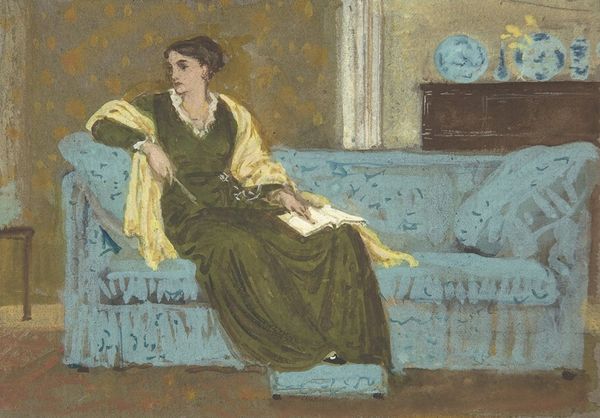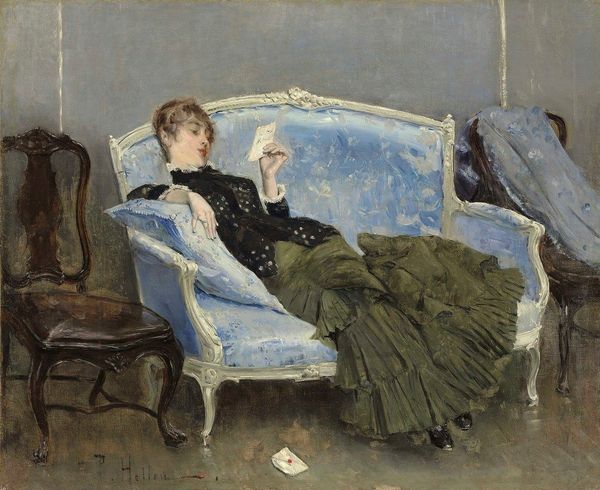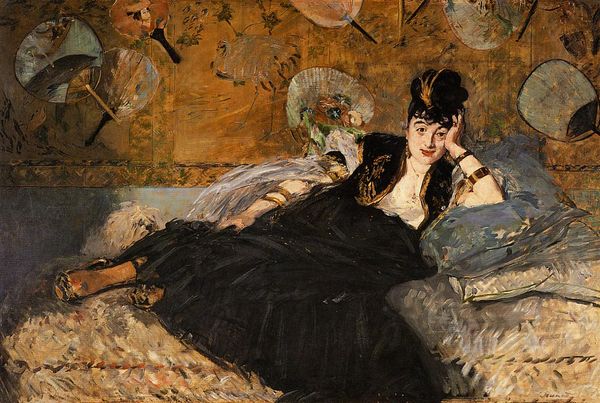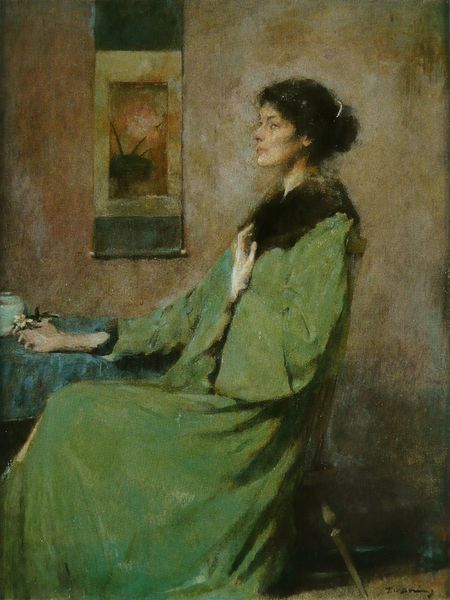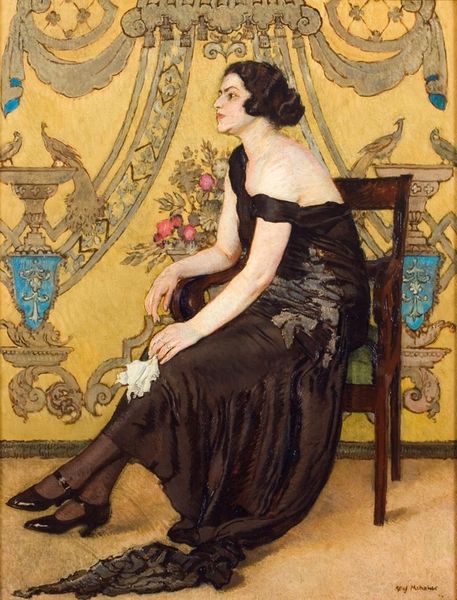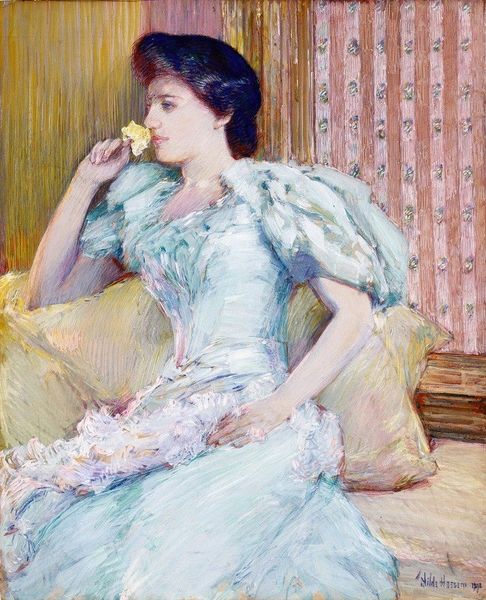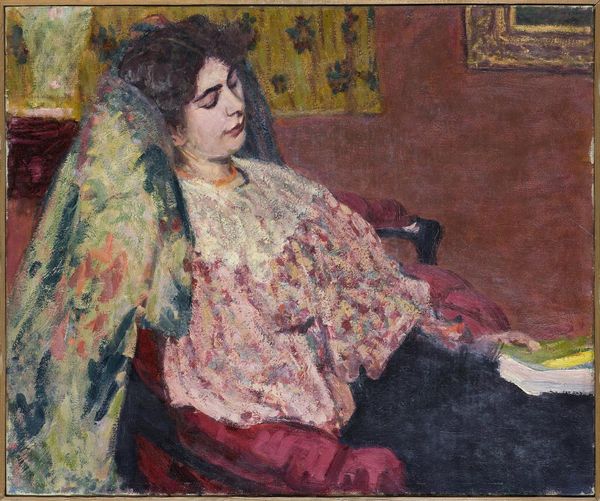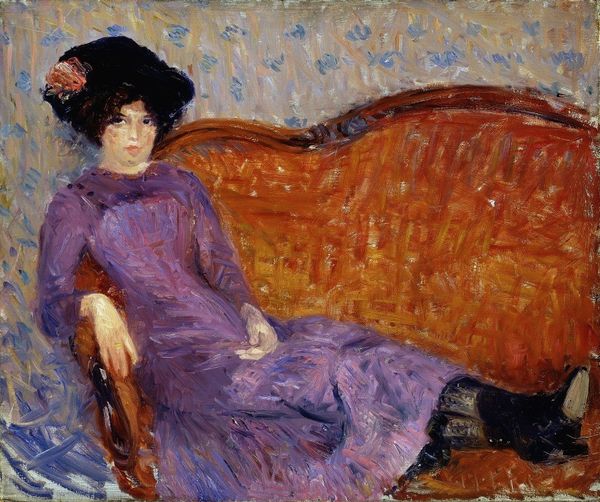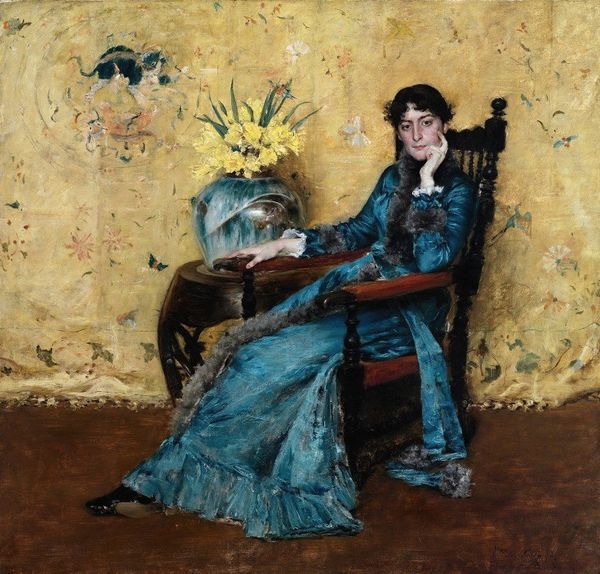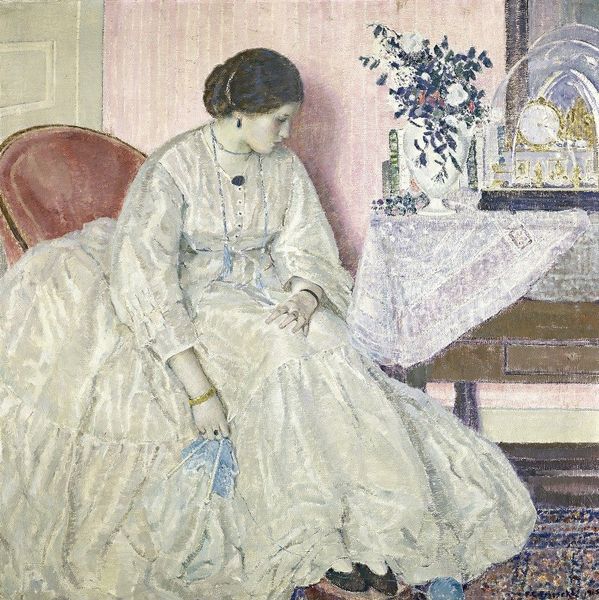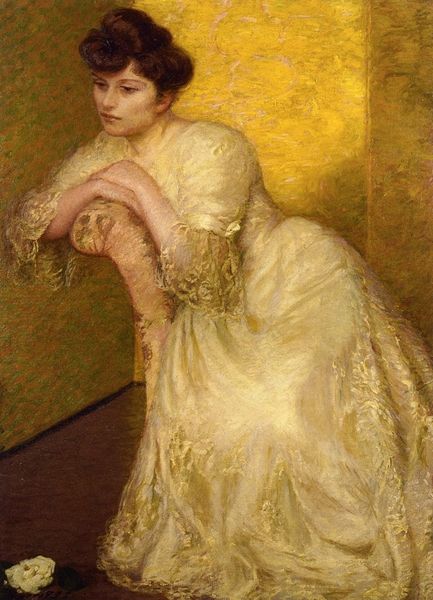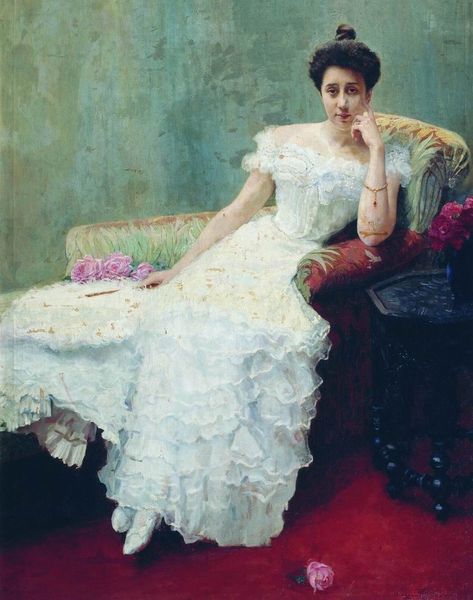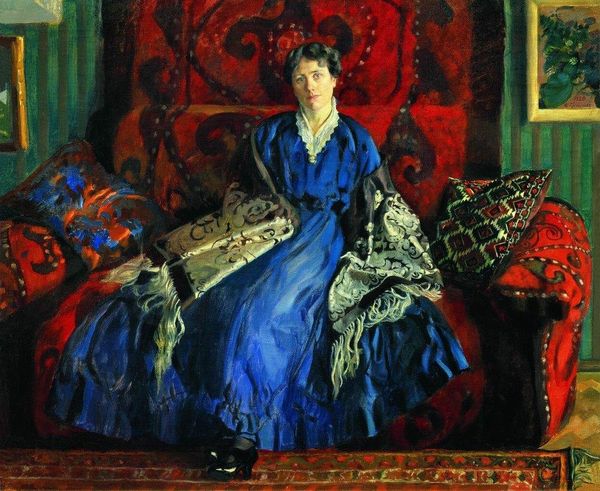
painting, oil-paint
#
portrait
#
figurative
#
painting
#
oil-paint
#
figuration
#
oil painting
#
aesthetic-movement
#
romanticism
#
painting art
#
genre-painting
Copyright: Public Domain: Artvee
Art Historian: We're looking at a piece titled "April," an oil painting by the American artist Childe Hassam. Curator: The immediate feeling I get is one of quiet introspection. There’s a formality, but also a stillness. She’s beautifully rendered, but appears constrained. Art Historian: Yes, Hassam masterfully captures a sense of refined elegance, and her posture has a purpose. Consider how the composition directs our gaze toward the natural motifs. The birds depicted on the wall behind her, for instance, might symbolize freedom and aspiration, yet paradoxically, they are contained within the decorative screen. Curator: That's a compelling point about confinement versus freedom. Look at her dress—the vibrant green and intricate detailing almost feel like a cage of beauty. It makes me think about the societal expectations placed on women of that era and how beauty could simultaneously empower and restrict. Who was she dressing up for? Is this beauty for her own pleasure? Art Historian: Her very dress could have multiple readings. Green, traditionally a symbol of fertility, and renewal of life, ties her, in a way, directly to the month in the title of the work. It makes you wonder how much agency this woman had. I notice the presence of what appears to be jonquils, also indicative of spring and rebirth, however they sit quite diminutive in size. What is Hassam subtly conveying to us here about the symbolism of springtime and of nature? Curator: The yellow flowers near the window is interesting when juxtaposed with her dress of a very prominent green hue. It also looks like there may be two figures just beyond that opening, who seem almost concealed from plain sight. If so, perhaps Hassam alludes to unseen observers or forces influencing her reality, suggesting she may be more than a passive subject in this scene. I wonder too if these hints toward freedom might touch on any of Hassam’s own beliefs about women? Art Historian: It invites deeper reflection on the complexities of identity, doesn't it? It makes one think beyond a static image. The picture seems rife with emotional suggestion, but as is often the case in these ambiguous images, so many different possibilities arise. Curator: Absolutely. Situating this work within the context of its time really enhances its ability to have relevance even now. Art Historian: It has indeed, and I find myself noticing so much more now.
Comments
No comments
Be the first to comment and join the conversation on the ultimate creative platform.
